Channel Tunnel celebrates 30th year
- Published
- comments
Going under the sea from England to France in 68 seconds (from 2019)
It's the longest undersea channel in the world and today it is celebrating its 30th anniversary.
The Channel Tunnel opened in May 1994 and connects Kent, in southern England, to Calais, in northern France, underneath the sea bed of the English Channel.
The 31 mile (50.5km) journey takes just 35 minutes, a much quicker way than taking a ferry or a plane to our neighbours.
Nearly 10 million people use the 'Chunnel' every year - are you one of them?
Let us know if you've travelled in the Channel Tunnel before in the comments below.
Why was the Channel tunnel created and how did it impact Europe?
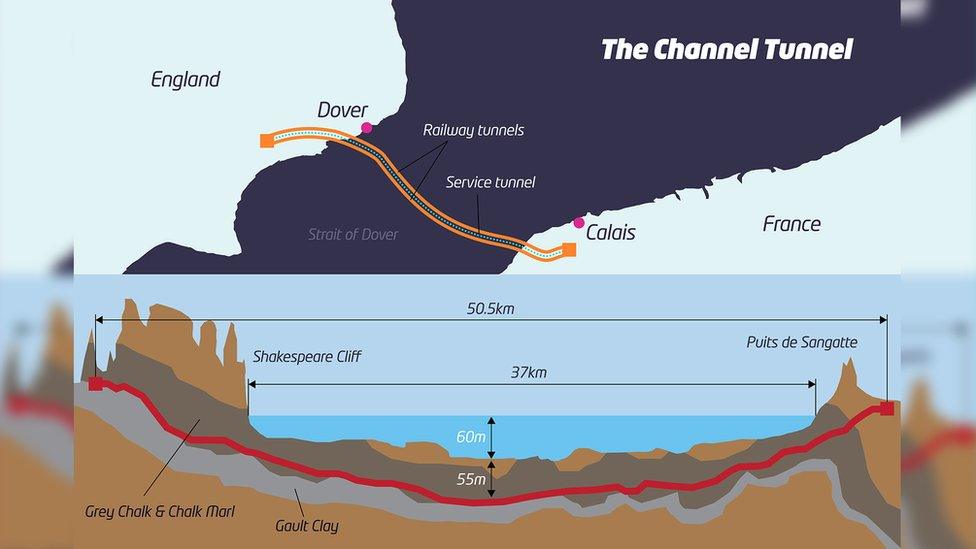
Work began on the revolutionary tunnel in 1988 and it was opened by Queen Elizabeth II on May 6, 1994.
More than 13,000 workers from both France and England worked on the project which took six years to build.
And, it's not just one tunnel - it's actually three tunnels that run parallel to each other. Two for trains and one service tunnel for access and ventilation.
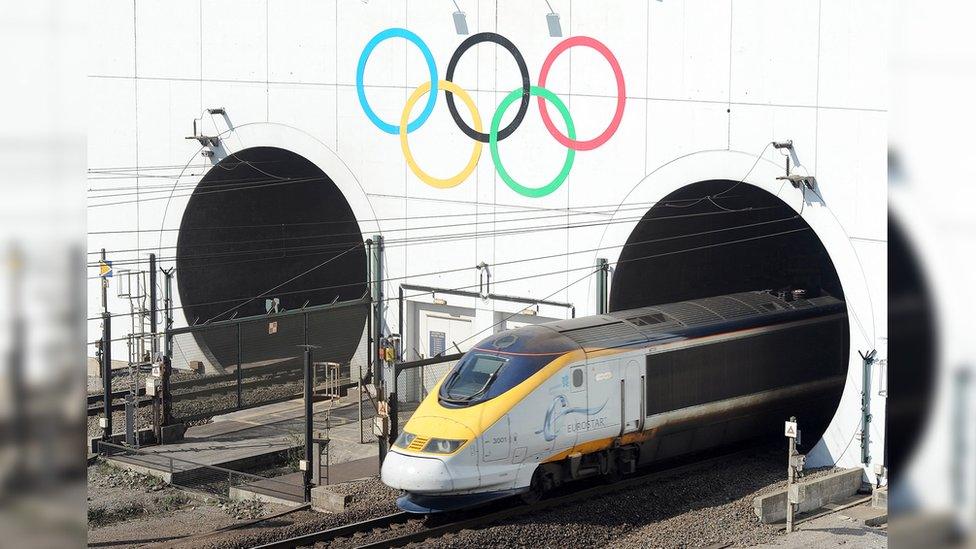
Much like in 2012 when London hosted the Olympic Games, lots of people will be travelling through the Channel Tunnel for the Olympic Games in Paris this year
It was built to create a cheaper and quicker alternative to travelling between England and France than by ferry or plane.
Trade between the UK and EU also benefitted from the new structure.
A very long bridge was considered as an alternative but it was decided digging a tunnel was less disruptive to the environment.
How did they build the Channel Tunnel?

Construction worker in 1974
It takes a lot of planning and some serious engineering know-how to build a tunnel underneath the sea.
First, the geology of the bottom of the sea under the Channel was looked at - that's looking at what rocky materials it's made up of.
Engineers also got to work designing and building a machine to make a deep long hole through this material.
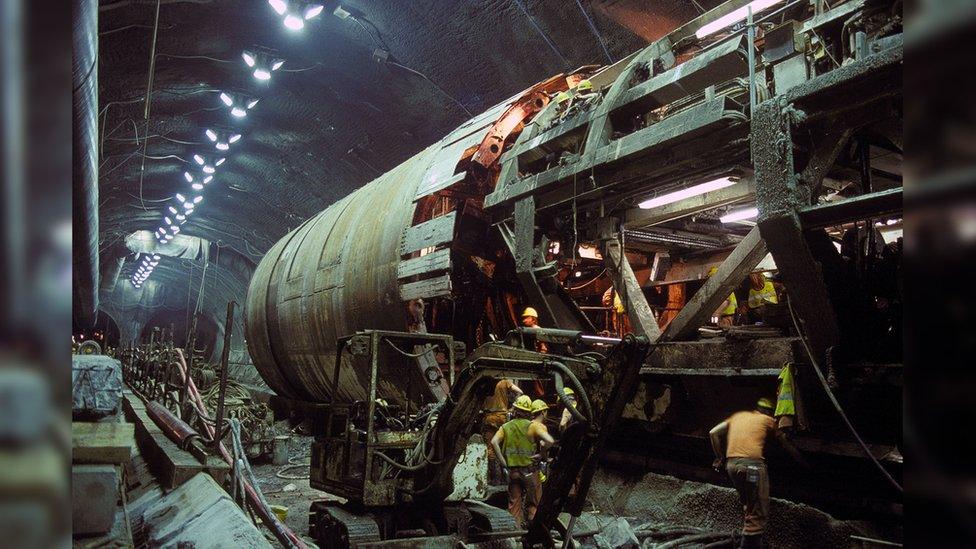
This is the boring machine that was used to dig through the seabed. It's called this not because it's dull, but because they bore through the chalk which means they dig a big deep hole in the ground!
Work started at the coast of both Folkestone in England and Calais in France, with the tunnel meeting in the middle eventually.
Special machines dug into the ground. The debris collected was then transported out using a conveyor belt.
The tunnel was then lined with concrete to keep it from collapsing under huge amounts of pressure from the sea around it.
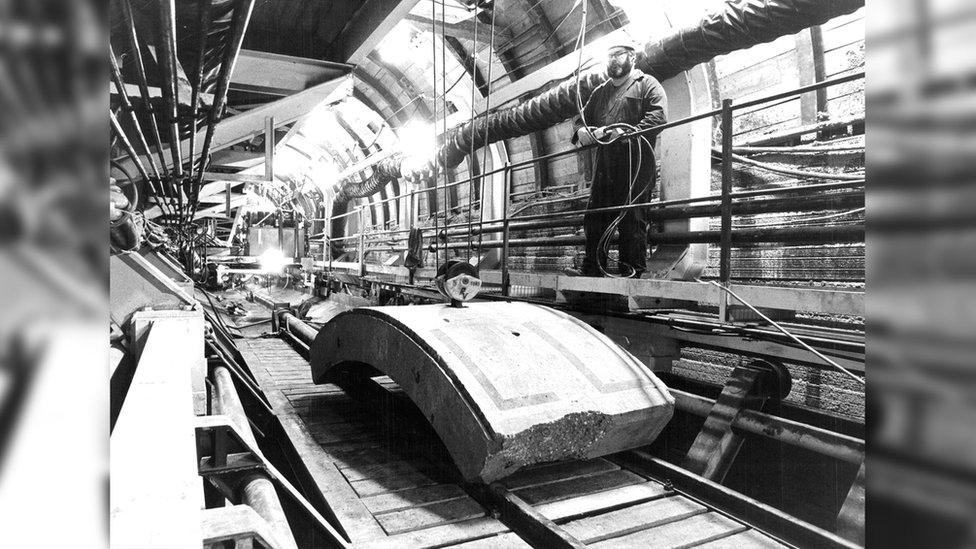
The two sides eventually joined together in 1990 and two workers, one French and one English, shook hands in the middle in a momentous moment.
The Eurotunnel cost a whopping £4.65 billion to build, which would be around £12 billion today.
The deepest the Channel Tunnel reaches is 75 metres below sea level.
According to Eurostar, that's the same as 107 baguettes balancing end to end on top of each other!
What speed does the train travel at in the Eurotunnel?
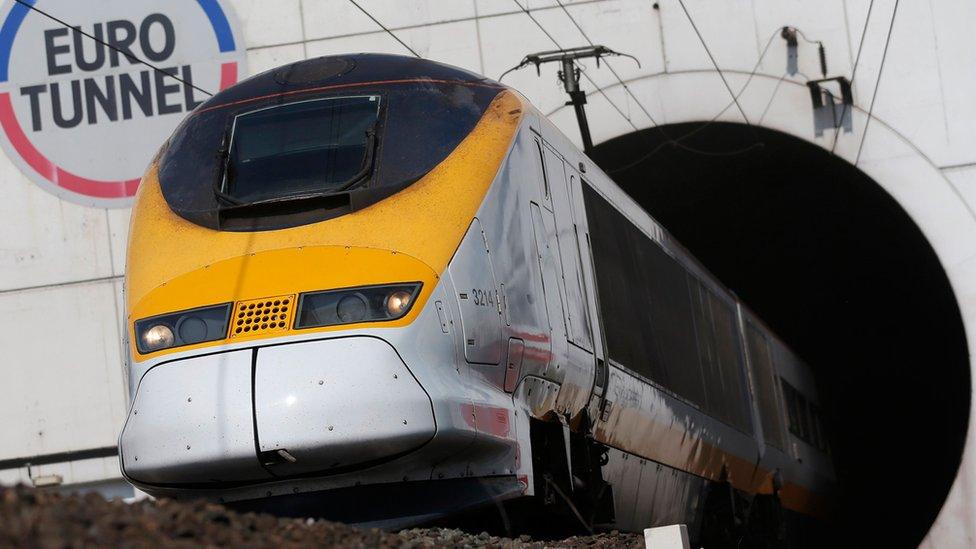
There are two types of trains that go trough the Channel Tunnel: The Eurostar and LeShuttle trains.
The Eurostar is the quickest train, and you travel on it just like a normal train.
It travels at 100mph through the tunnel and takes just 20 minutes.
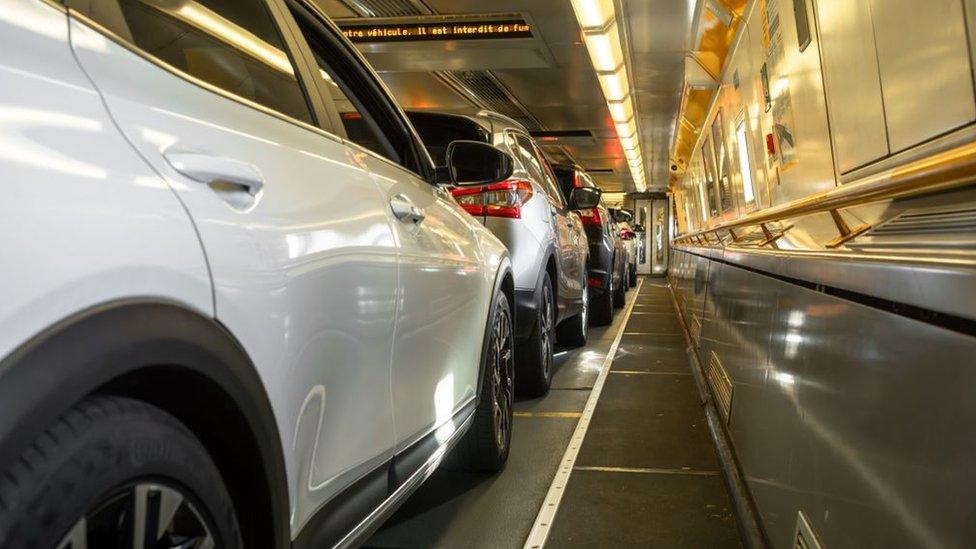
This is what the cars look like lined up on LeShuttle trains
LeShuttle trains on the other hand, also transport vehicles like cars across. The train itself is over half a mile long!
You park your vehicle on the deck of the shuttle and you can enjoy the journey without getting out - unless you want to stretch your legs or need the toilet.
It travels at nearly 87mph.
Does the Channel Tunnel ever leak?
Yes - the Eurotunnel was actually designed to leak.
The water naturally comes through slowly and is collected at drainage sites along the tunnel where it is swiftly pumped away.
- Published24 January 2024
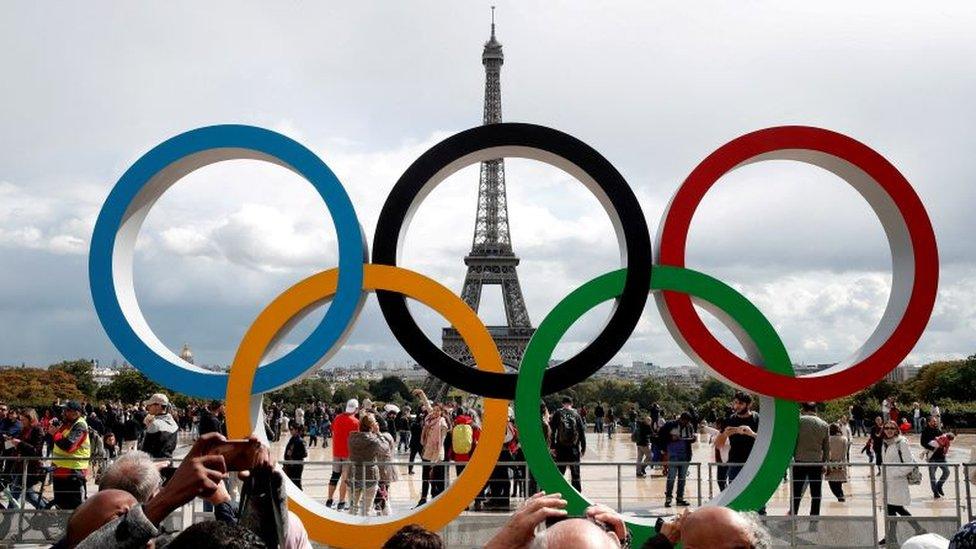
- Published22 July 2024

- Published17 April 2024

